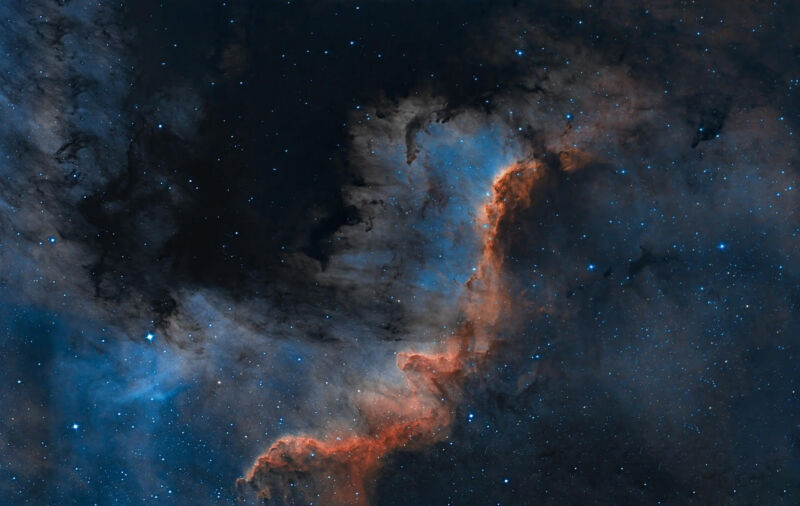
Mel Martin
Good morning. It’s January 16, and today we’re traveling 2,600 light-years outward into space, to the Cygnus Wall.
Although this sounds like some kind of intergalactic barrier, the Cygnus Wall’s nomenclature has a more mundane origin—it looks like a wall and is located in the Cygnus constellation. It is the brightest region of the so-called North American Nebula, which in some photographs looks like the outline of North America.
The Cygnus Wall, if you use your imagination, somewhat resembles Central America and Mexico. It is a region of vigorous star formation with lots of hydrogen and sulfur, which produce the reddish hues in this image, and oxygen, shown in blue. This feature measures about 20 light-years across, or more than six times the diameter of our Solar System.
Mel Martin sent in this image, taken from a backyard observatory in Arizona. Lovely.
Source: Mel Martin
Do you want to submit a photo for the Daily Telescope? Reach out and say hello.

